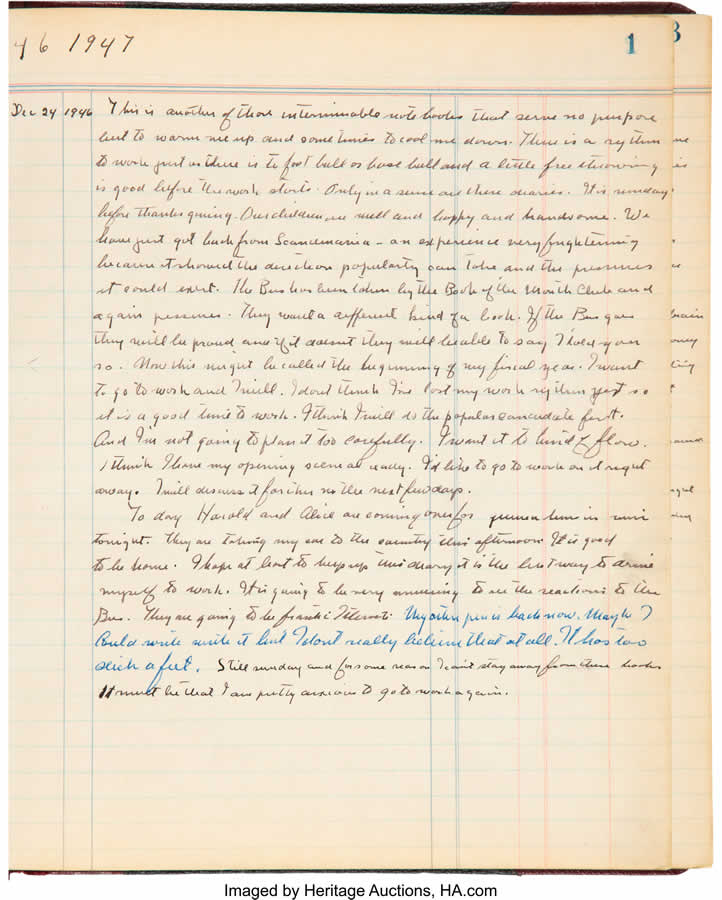MANUSCRIPTS, LETTERS FROM THE KENNEDYS AMONG ITEMS FROM NEW YORK HOME OF LITERARY GIANT
Few American writers have reached the literary heights of John Steinbeck.
He received both the Nobel and Pulitzer prizes for literature and was named to the American Academy of Arts and Letters and the National Institute of Arts and Letters. His books were embraced by the public, reaching the top of the bestseller lists. Four of them were made into Broadway shows and six were made into movies.
EVENT
ESTATE OF JOHN & ELAINE STEINBECK MANUSCRIPT AUCTION 30151
Oct. 24, 2019
Online: HA.com/30151a
INQUIRIES
Elyse Luray
212.486.3504
ElyseL@HA.com
“Despite these successes, he often doubted his abilities,” notes the book John Steinbeck: The Voice of the Land. “The critics were seldom kind to him, making his doubts grow. But at the end of his life he realized that by championing the causes of the underprivileged, he had made a lasting impression on the social consciousness of America.”
Steinbeck died in 1968, but his reputation as a great American writer continues to grow. “John Steinbeck was a giant of 20th-century literature,” says Elyse Luray of Heritage Auctions. “Novels such as The Grapes of Wrath, Tortilla Flat, Of Mice and Men and East of Eden made him world famous and they remain classics of American literature.”
Personal items from the New York home of Steinbeck and wife Elaine are featured in an Oct. 24 single-owner online auction.
“These manuscripts and decorative objects have been in storage for several years and the family has decided to make them available to Steinbeck fans everywhere,” Luray says. “These are items that personally belonged to John. They give collectors a front-row seat into this life, travels, thoughts, family and personal feelings.”
Of particular interest is Steinbeck’s so-called “Warm Up Journal,” a journal he describes as “one of those interminable notebooks that serves no purpose but to warm me up and sometimes to cool me down.”
“From November 1946 to June 1947, this is where John went to vent his frustrations and fears,” Luray says. “It is an important artifact that provides fascinating insights into his state of mind during work on The Wayward Bus, his ultimately scrapped play titled The Last Joan, and various other projects.”
Enlarge

Other intriguing items are letters from John and Jacqueline Kennedy. In a Sept. 8, 1961, letter to Steinbeck, President Kennedy discusses future collaborations between the government and the nation’s artistic community.
In a 1964 six-page handwritten letter, Jacqueline Kennedy answers questions from Steinbeck about her late husband. She had expressed a desire for Steinbeck to write a definitive biography of her late husband. “These are particularly personal as Jackie writes about her husband and her struggles,” Luray says.
“These are deeply personal items,” Luray adds. “It’s rare to see how his talented mind pondered topics that are still relevant today.”
Enlarge

Proof of Dust Jacket for First Edition
Estimate: $1,000+
From the Estate of John and Elaine Steinbeck





